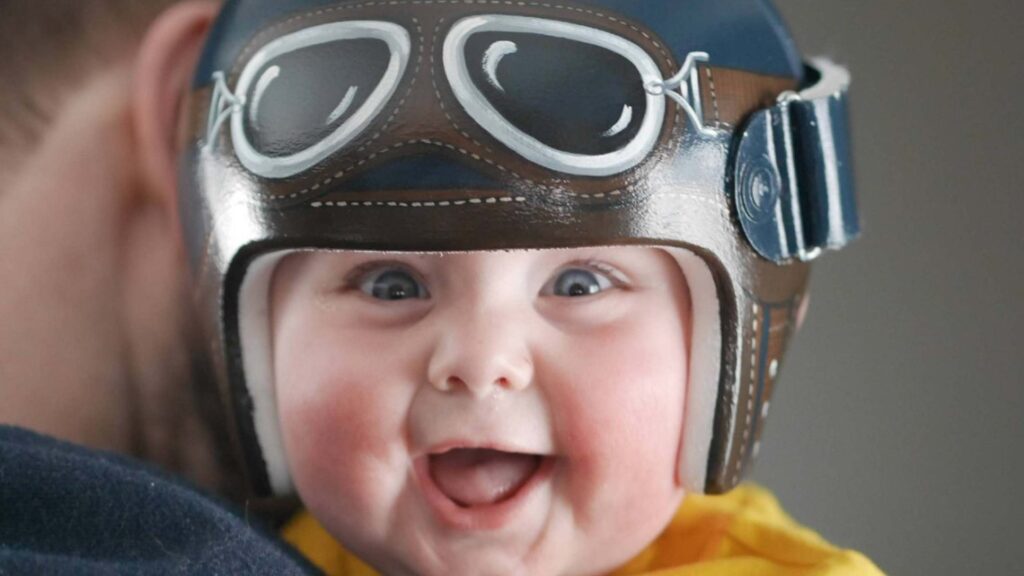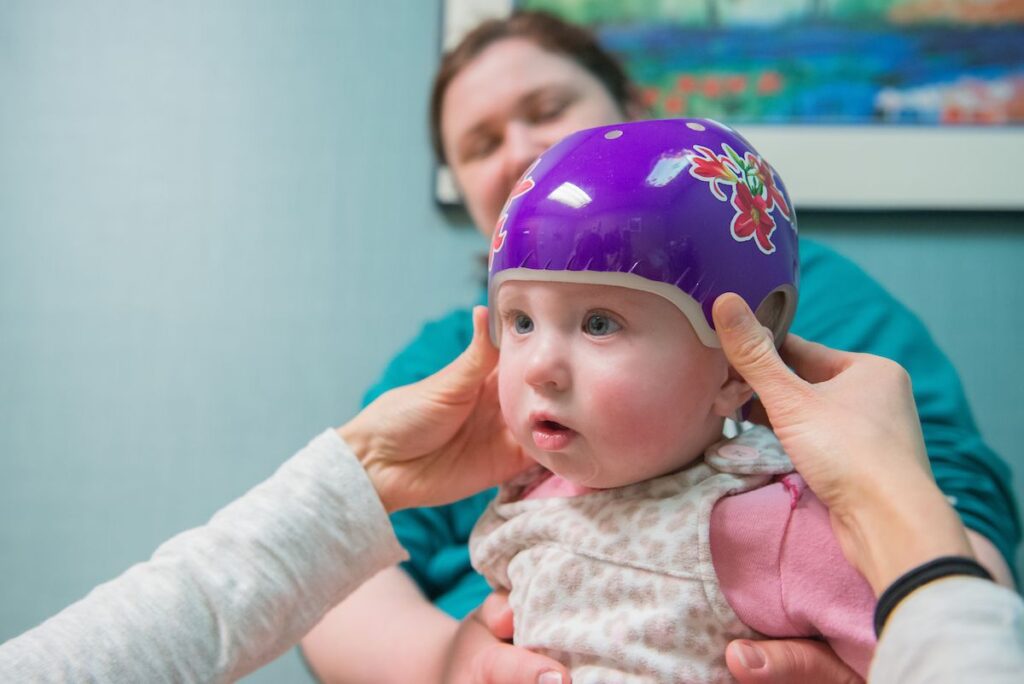Baby Helmet For Flat Head: Should You Use A Helmet To Correct Your Baby’s Head Shape? When a flat spot forms on the back of your baby’s head, parents naturally become concerned. It can be frightening not understanding if it will go away. You are not alone, as 47% of infants have some type of flat spot and one in ten requires treatment. Your pediatrician may advise you to put your baby in a helmet to lightly mold their skull back into a round shape.
Contents
What causes my baby’s head to flatten?

When a baby sleeps in the same position for an extended period of time, the soft plates may create a flat spot or uneven appearance. Plagiocephaly is a common condition that is not harmful to your baby’s brain. If the condition does not improve on its own, your doctor may advise you to try repositioning, exercises, or helmet therapy.
In other cases, the baby’s skull plates fuse prematurely or in an abnormal manner. Craniosynostosis may necessitate surgical treatment with or without a helmet to correct the head shape.
Many parents who discover their child requires a helmet begin to blame themselves. You might even want to know if those pesky flat spots, known technically as plagiocephaly, could have been avoided.
The truth is that most babies’ heads are not perfectly shaped. Most adults also do not have perfectly shaped heads. Small lumps and flat spots are normal. When your baby has a huge flat spot on their skull, it’s usually due to birth (your baby’s skull may have become irregularly shaped whilst also passing through the birth canal) or because they regularly lie flat on their back.
The skull bones of your infant are malleable, which means they move more freely than they do in adulthood. This allows your baby’s head to move through the birth canal and its brain to develop during childhood. Tension to the back as well as the side of the head, on the other hand, can result in permanent malformation if not corrected.
Baby Helmet For Flat Head: When should my child wear a helmet?
Your baby’s head shape is unlikely to cause brain damage or even other developmental issues. In fact, most insurance companies and doctors regard a flat spot as a cosmetic issue. So, how do you know if your child needs a helmet?
At each well-child visit, your doctor will examine your baby’s head size and shape. During infancy, these visits occur approximately every 2 months. If your baby does have a large flat spot that isn’t improving by 4 months of age, your doctor may recommend a helmet. Treatment should start between the ages of 4 and 6 months for a helmet to be effective.
As a result, the helmet will gently shape your baby’s skull as they grow. After the age of one, therapy is normally considered ineffective because the skull has begun to fuse together.
What is the purpose of wearing a helmet?
The use of a helmet to correct positional plagiocephaly is not for the faint of heart. During treatment, you must keep the helmet on your baby for 23 hours a day. Helmets are typically worn over several months. To keep up with their growth as well as changing head shape, your child’s helmet will need to be adjusted on a regular basis, possibly weekly. Because insurance does not always cover helmets, purchasing and adjusting a helmet on a regular basis can be costly.
Alternative treatments for positional plagiocephaly

According to some studies, simple repositioning techniques may be equally effective as wearing a molded helmet. Your doctor may also recommend occupational or physical therapy to address any additional issues, such as infant torticollis, which causes a twisted neck. These techniques can assist you in repositioning your baby and allowing their skull to correct flat spots on its own:
Prioritize tummy time. Every day, place your baby on his tummy under supervision. This relieves pressure on your child’s back of the head and helps him help bolster his neck muscles.
Cuddle. Holding your baby isn’t just good for bonding. It also helps to relieve pressure on the back of your child’s head caused by sitting in a car seat, swing, or carrier.
Switch things up. Try positioning your baby in ways that force him to turn away from the flat spot on his head. Feed the baby from both sides if possible. Put him in different positions in his crib so he has to turn to see you. You also can try moving his crib on a regular basis so that no one spot on his head becomes overused or flattened.
Switch things up. Try positioning your baby in ways that force him to turn away from the flat spot on his head. Feed the baby from both sides if possible. Put him in different positions in his crib so he has to turn to see you. You also can try moving his crib on a regular basis so that no one spot on his head becomes overused or flattened.
Most of the time, your baby’s head shape will correct itself. With time and effort, your baby’s head will grow as well as return to normal as they move and do more. A helmet can also be used to correct large malformations or flat spots on your baby’s head. Baby Helmet For Flat Head is useful. Inquire with your doctor about whether your baby requires a helmet and what you could do to correct his flat spot.
